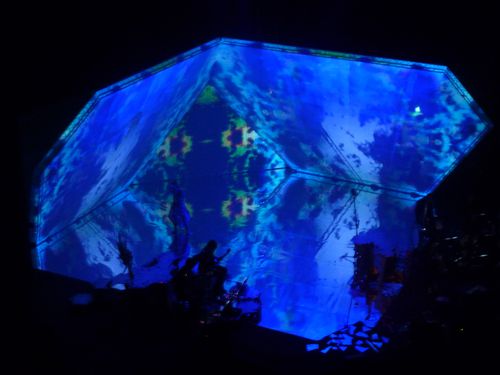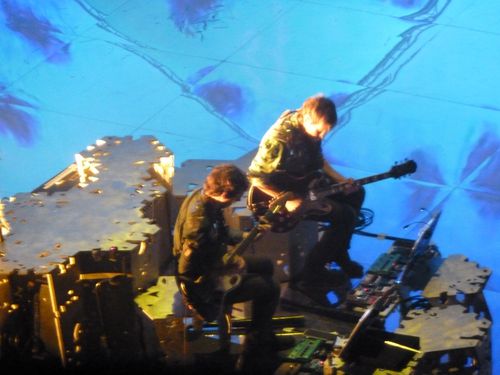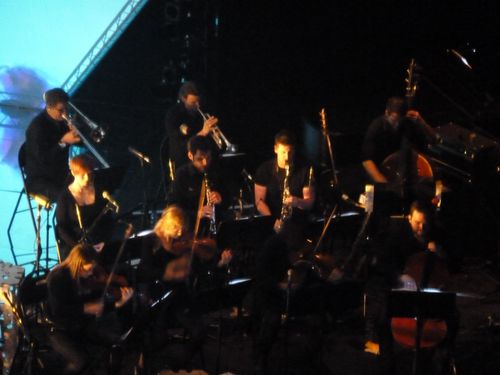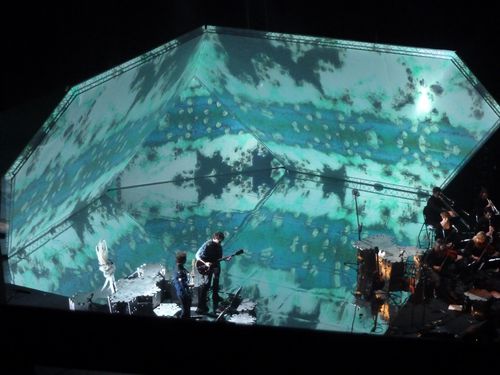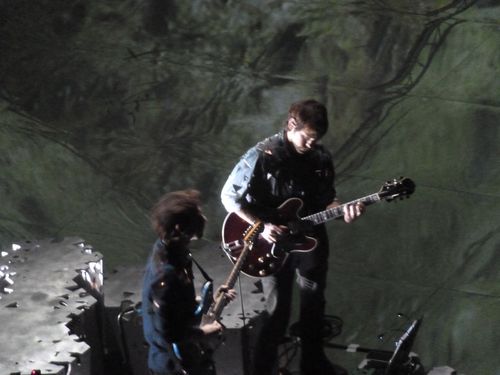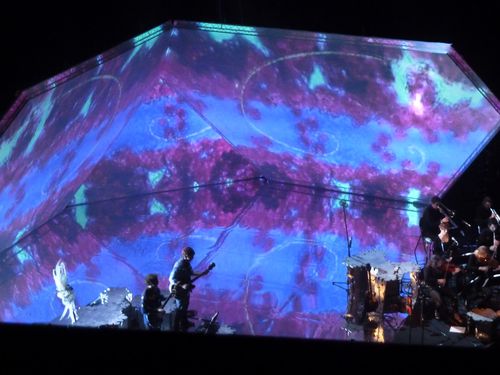
Baseball meets Mayan creation myth, meets art, meets American indie rock, meets classical music in The Long Count. At first sight this labyrinth of elements has no obvious connection. What makes artistic sense of these disparate elements are Bryce and Aaron Dessner, the twin brothers behind US band The National.
The Dessners have composed the music of The Long Count. Words from Popol Vuh, the Mesoamerican creation myth set before time began, with accompanying visuals by British artist Matthew Ritchie. Looking in, you wonder what was the starting point?
Three years ago, Aaron Dessner was writing with Bon Iver's Justin Vernon, a track called "Big Red Machine" for HIV and AIDS charity the Red Hot Organization (it appears on the album, Dark Was the Night). If you know your baseball, you'll know The Big Red Machine was the Cincinatti Reds, who won the second of their back-to-back World Series in 1976, the year the Dessners were born, in Cincinatti. The boys grew up in thrall to the Reds.
"The first ten years of our life we were following the remnants of this classic baseball team", remembers Bryce Dessner. "Pete Rose (the Reds' switch hitter, later disgraced in betting scandal) was a mythical baseball legend- we hung on his every hit."
As the Long Count begins, we can hear broadcast audio from The Reds versus The Yankees, the first clash of the 1976 World Series: "Playing third base: No. 14, Pete Rose."
But from baseball the project, originally commissioned by BAM (Brooklyn Academy of Arts), evolved. Once the Dessners began collaborating with Matthew Richie, the artist's interest in Popol Vuh proved infectious. The Long Count is the name given to the Mayan calendar (incidentally it resets in 2012; New Agers everywhere will be going barmy on 21 December), and Popol Vuh are the stories of its creation; a fantastic tale of hero twins surviving various tests including an outlandish ball game.
"Popol Vuh is one of the most documented stories of creation outside the Bible," says Dessner, who goes on to describe the story's personal resonance. "It deals with twin brothers who play a ball game, so immediately you think: Oh, look at the coincidence! It was all creative fodder for making songs."
In the audience, we need to free up our expectations because The Long Count has no linear narrative in the sense of a play or an opera. Artist Richie describes it as an anti-narrative, "reformulating itself with minor changes- as close to the idea of music as story can be." The meeting of words and music explores twinship, myth, the Dessner's childhood and music-making. Yet there are various key points as the action unfolds.
We begin with Shara Worden, classically-trained singer of My Brightest Diamond, who appears as Venus, the morning star at the dawn of the world: "Simple words brought it forth like a mist", she sings. the hero twins (Bryce and Aaron) appear in "Long Summer" and meet their mirror twins- Worden with Kelley Deal of The Breeders- in Bull Run.
As we near the finale, guest artist, TV On the Radio frontman Tunde Adebimpe, appears as lord of the underworld in "Test", charting the gory games the hero twins must survive. There's a bit of fun here too, adds Dessner: "We play guitar games on stage; a tug of war and we hit the guitar with baseball bats." The twins triumph and in Aheym, they become the sun and the moon. The Long Count begins. Played by the Dessner brothers and a small chamber orchestra, the music mixes classical and rock, electronic and acoustic. There is plenty of rythmic counterpoint (not unlike American minimalist composer Steve Reich, with whom Bryce Dessner has also collaborated), and crescendos dying away into reflective calm.
"I'd say the music is all generated out of the way my brother and I play the guitar; it's all coming from things we do rythmically," says Bryce Dessner. "We have adventurous tastes in music- we like contemporary classical and pretty out-there experimental music- so this was an opportunity to push ourselves in terms of sound."
For Dessner, the key to the Long Count's multidiscipline mix is the collaboration with Ritchie and the performers. He sees similarities with theatre director Robert Wilson's work with David Byrne, Tom Waits and William S. Burroughs (The Knee Plays, 1984; The Black Rider, 1990). What's more, argues Dessner, borders and barriers are falling in the music world.
"Right now, there is a younger generation of musicians who are sensing a kind of free-moving energy, engaging in the environment in an active way. It's not necessarily about breaking some boundary." And this makes for dazzling artistic collaborations, like The Long Count. "Yes", agrees Dessler, "there's work being done that's empowered and courageous. It feels positive"
Extract from the program of the show, Copyright Emma Pomfrey
Photos taken yesterday


